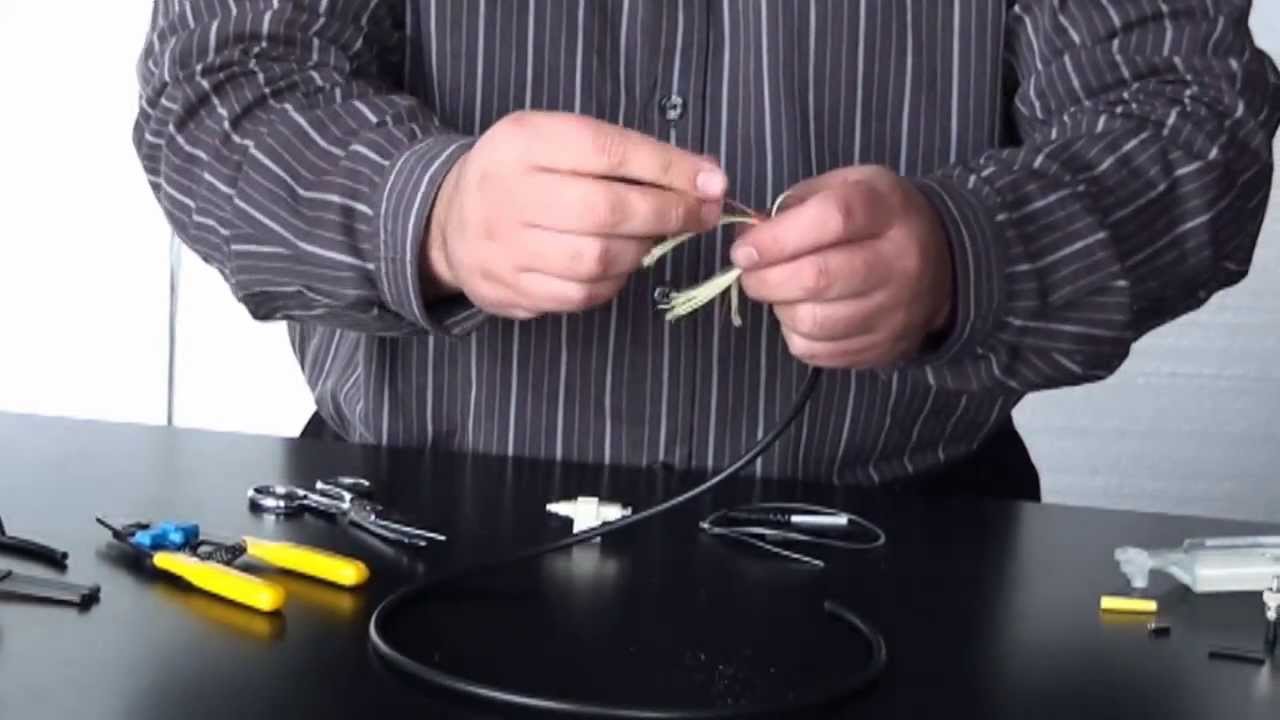The normal recommendation for fiber optic cable bending is to ensure that the minimum bending radius when the cable is subjected to a pulling force is 20 times the diameter of the cable. When pulling force is not applied, the long-term recommended minimum bend radius is 10 times the cable diameter.
Water protection
In outdoor installations, all cables must be protected from water or moisture. To begin with, this protection is provided by a moisture-resistant jacket, usually made of polyethylene (PE); and from the filling of the cable with components that block water. The most common way to protect it is to fill the cable with a gel that blocks water. It’s effective, though tricky, as you’ll need a product to remove the gel (using a commercial product is best, but lemon juice is a good substitute). A more modern alternative is to block the water using absorbent tape or powder, similar to the material used in disposable diapers to absorb moisture. Today, most cable manufacturers offer cables with water blocking components.
Crushing or entry of rodents
Armored cables are used for their strong jackets, which resist crushing and rodent entry. In general, direct buried outside plant cables are shielded or installed within underground conduit. Shielded cables for indoor installation must have jackets, as established by the National Electrical Code (NEC), to locate them with other cables under a raised floor, such as in a data center. Cables without identification should never be installed indoors as they will be rejected during the building inspection. Cables for outdoor installation do not have fire-retardant components and can only be used indoors on runs of up to 15 meters. If you need to use an outdoor cable for indoor installation, PE double-jacketed cable is recommended instead of PVC-jacketed indoor cable which is UL Listed (Underwriters Laboratories). Simply remove the outdoor protection jacket when installing indoors and there is no need to terminate the cable at the point of entry to the building.
Grounding and equipotential bonding
Any cable containing conductive metal must be grounded and bonded in accordance with the National Electrical Code (NEC) for safety. The following indoor cables: conductor fiber optic cable (OFC), conductor Fiber optic cable for general use (OFCG), fiber optic cable for vertical cabling or ” riser ” (OFCR), fiber optic cable for cabling applications ” plenum” (OFCP) and outdoor cables with metal reinforcement or shielding elements must be grounded and equipotential bonded. All mixed cables must be properly grounded for safety.
Wire color code
Outdoor cables are usually black but indoor cables are color coded. Standard cable reference colors are yellow for single mode cable jackets and orange for multimode. With two sizes of multimode fiber currently in use, 62.5/125 and 50/125, and two versions of 50/125 fiber, it is important to comply with the TIA-598 standard to avoid mixing cables.
Choice of cables
Choosing fiber optic cable for any application involves considering installation and environmental requirements as well as long-term installation requirements that allow for network expansion. Among the installation requirements we must consider where and how the cable will be installed, either in an underground conduit in outside plant or in trays inside a building. Among the requirements for long-term installations we have to consider humidity or exposure to water, temperature,
It is recommended to contact several cable manufacturers and give them the specifications of the installation; they will want to know where the cable will be installed, how many fibers will be needed and what type (single mode, multimode or both – “hybrid” cable). A “mixed” cable that has copper conductors for optical or electrical signals can also be used. The cable manufacturing companies will evaluate the requested requirements and make suggestions. Then you can listen to offers from other providers.
As planned, a certain number of fibers will be needed,
But consider adding additional fibers to the cable; fibers are inexpensive when compared to the cost of installing additional cables. Also, if you break a fiber or two while splicing, tapping, or terminating, that won’t be a problem. Also take into account future expansion needs. Most users install far more fiber than is needed, adding single-mode fiber to multimode fiber cables to be installed on campus or in- plant backbones.
You will find more information about the choice of cables in the chapter on designing a fiber optic network.



